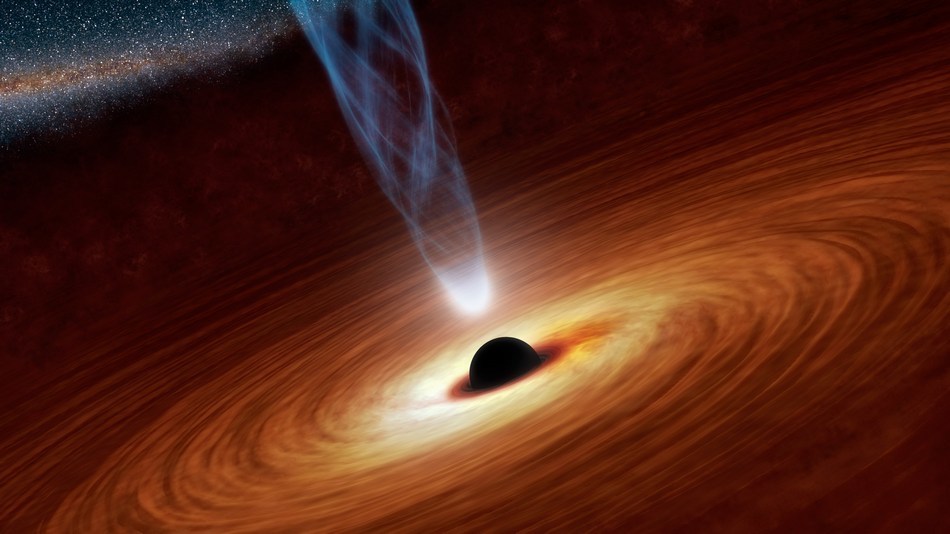Stellar Evolution - How It Works

People have long been occupied with the causes of burning stars in the sky, however, we began to truly understand these processes from the first half of the 20th century. In this article, I tried to describe all the main processes that occur during the life cycle of a star.
Star birth Star
formation begins with a molecular cloud (which includes 1% of all interstellar matter by mass) - they differ from ordinary ones for gas-dust clouds in the interstellar medium in that they have a higher density and a much lower temperature - so that atoms can molecules begin to form (mainly H²). This property itself does not have much significance, but the increased density of this substance is of great importance - it depends on whether the protostar can form at all, and how long it will take.
These clouds themselves, at a low relative density, due to their enormous size, can have significant masses - up to 10 6 solar masses. Newborn stars who did not have time to cast off the remnants of their “cradle” warm them up, which for very large clusters looks “spectacular” and is a source of beautiful astronomical photographs: “Pillars of Creation” and a video about this photograph of the Hubble telescope:
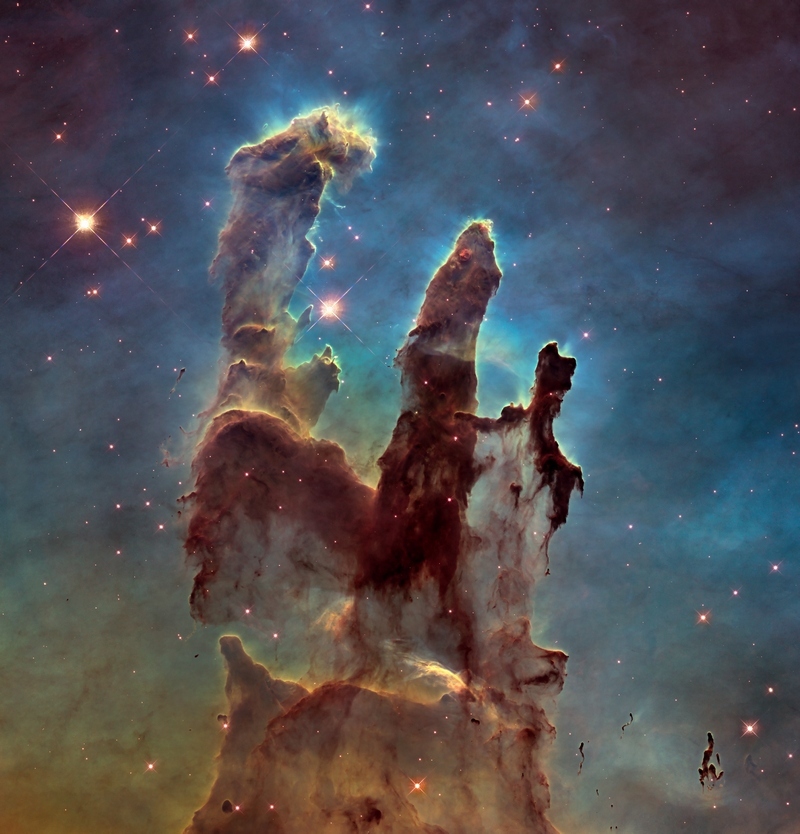
The Omega Nebula (part of the stars is the "background", the gas glows due to heating by the radiation of stars): The process of dropping the remnants of the molecular cloud is caused by the so-called "solar wind" - this is a stream of charged particles that are accelerated by the electromagnetic radiation of the star. The sun loses due to this process a million tons of matter per second, which for him (weighing 1.98855 ± 0.00025 * 10 27 tons) are mere trifles. Particles themselves have a huge temperature (of the order of a million degrees) and speed (about 400 km / s and 750 km / s for two different components): However, the low density of this substance means that they can not do much harm.

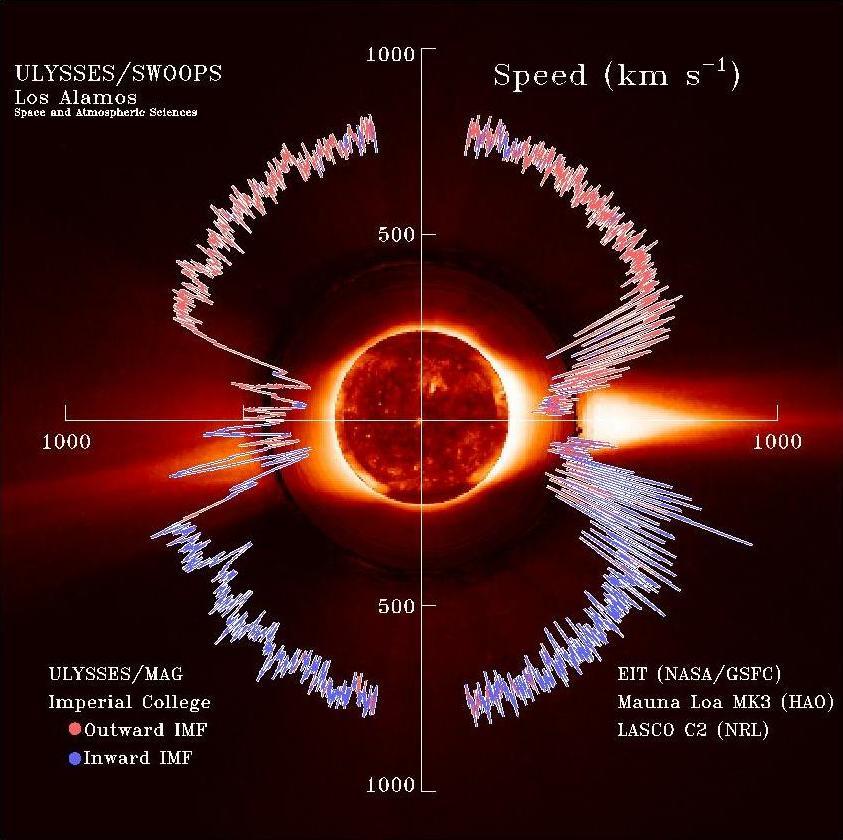
When gravitational forces begin to act, the compression of the gas causes a strong heating, due to which thermonuclear reactions begin. The same effect of heating the colliding substance served as the basis for the first direct observation of the exoplanet in 2004:

Planet 2M1207 b at a distance of 170 St. years from us.
However, the difference between small stars and gas-giant planets lies precisely in the fact that their masses are not enough to support the initial thermonuclear reaction, which generally consists in the formation of helium from hydrogen - in the presence of catalysts (the so-called CNO cycle - it is valid for stars of the II and I generation, which will be discussed below):
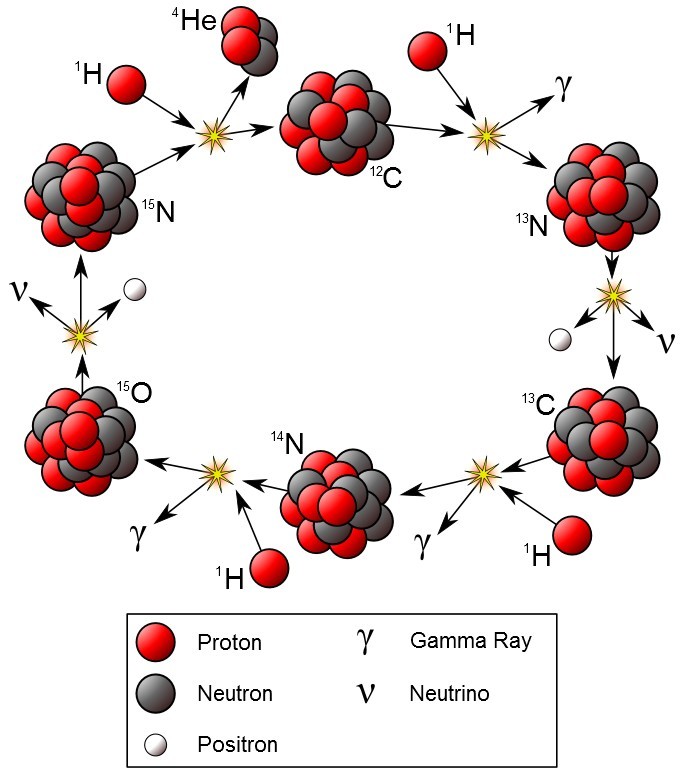
It is a question of a self-sustaining reaction, and not just the presence of its fact - because although the energy for this reaction (and therefore the temperature) is strictly limited from below, the energy of motion of individual particles in a gas is determined by the Maxwell distribution:
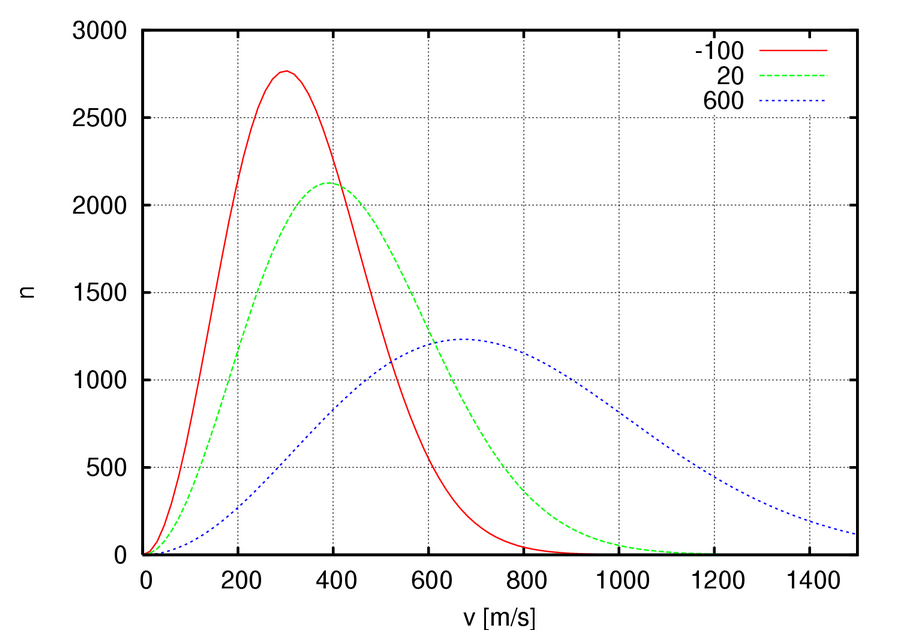
And therefore, even if the average gas temperature is 10 times lower than the “lower limit” of the thermonuclear reaction, there are always “cunning” particles that collect energy from neighbors and collect enough for a single case. The higher the average temperature, the more particles can overcome the “barrier”, and the more energy is released during these reactions. Therefore, the generally recognized boundary between the planet and the star is the threshold at which the thermonuclear reaction not only takes place, but also allows you to maintain the internal temperature despite the radiation of energy from its surface.
Star population
Before talking about the classification of stars, it is necessary to retreat, and return 13 billion years ago - at the moment when the first stars began to appear after the recombination of matter. This moment would seem strange to us - after all, we would not see any stars except the blue giants at that moment. The reason for this is the absence of “metals” in the early Universe (and in astronomy all substances are called “heavier” than helium). Their absence meant that for the ignition of the first stars a much larger mass was required (within the range of 20-130 solar masses) - after all, without a “metal” a CNO cycle is not possible, and instead there is only a direct cycle hydrogen + hydrogen = helium. Such was to be the stellar population III (due to their enormous weight, and early appearance - they were no longer in the visible part of the Universe).
Population II - these are stars formed from the remnants of stars of the III population, they are over 10 billion years old, and already contain “metals” in their composition. Therefore, having fallen at this moment, we would not have noticed any special oddities - among the stars there were already giants, and "average people" - like our star, and even red dwarfs.
Population I - these stars are formed already from the second generation of supernova remnants, containing even more “metals” - most modern stars, including our Sun, are among them.
Star Classification
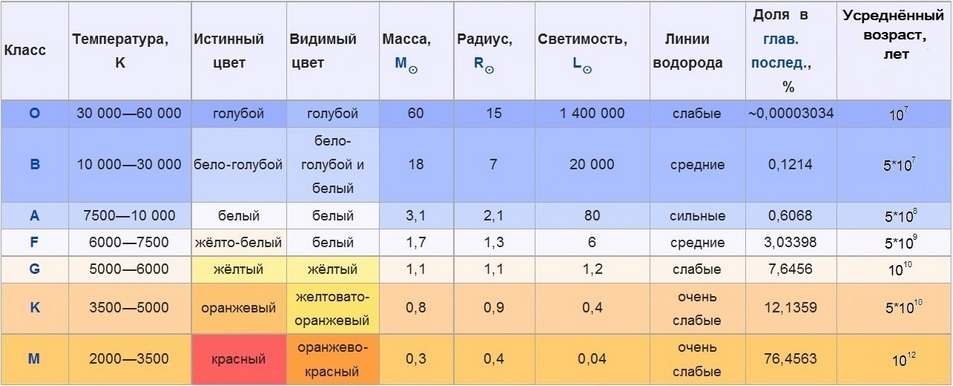
The modern classification of stars (Harvard) is very simple - it is based on the separation of stars by their colors. In small stars, reactions proceed much more slowly, and this disproportionality causes a difference in surface temperature, the larger the mass of the star, the more intense the radiation from its surface:

Color distributions, depending on temperature (in degrees Kelvin)
As can be seen from the graph of the Maxwell distribution above, reaction rates do not grow linearly depending on temperature — when the temperature approaches the “critical point” very close, reactions begin to proceed tens of times faster. Therefore, the life of large stars can be very short on an astronomical scale - just a couple of million years, this is nothing compared to the estimated lifetime of red dwarfs - a whole trillion years (for obvious reasons, not a single such star has faded, and we in this case we can rely only on calculations, but their life expectancy is clearly more than a hundred billion years).
The life of a star The
life of most stars takes place on the main sequence, which is a curved line running from the upper-left to the lower-right corner:
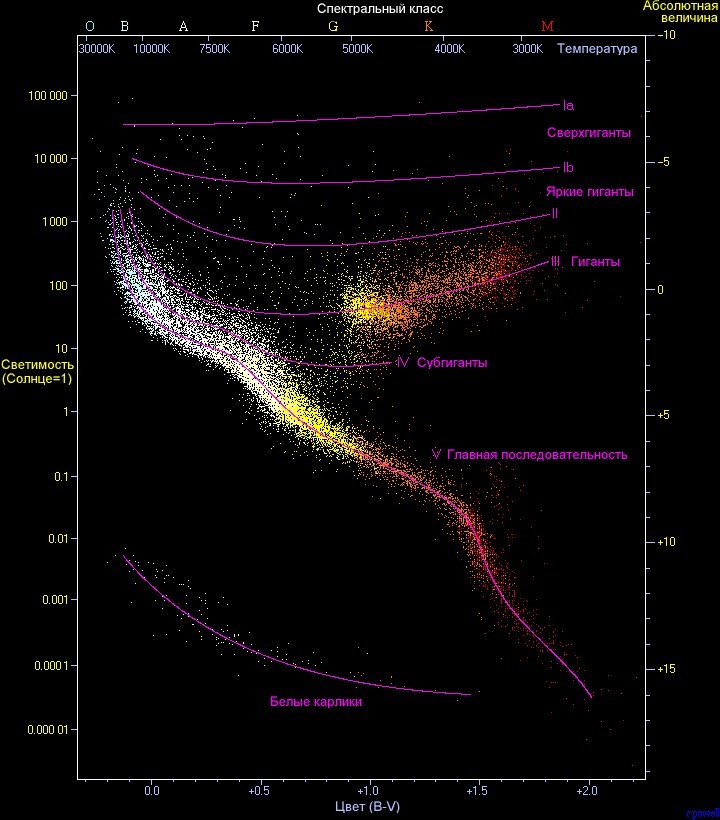
Hertzsprung-Russell diagram
This process may seem rather dull: hydrogen turns into helium, and this process lasts millions and even billions of years. But in fact, on the Sun (and other stars), even during this process, something happens all the time on the surface (and inside):
A video over a 5-year period, made from photographs of NASA's Solar Dynamics Observatory launched as part of the Life with a Star program, displays the view of the Sun in the visible, ultraviolet, and X-ray light spectra.
The complete process of thermonuclear reactions in heavy stars looks like this: hydrogen - helium - beryllium and carbon, and then several parallel processes that end on the formation of iron begin to go:
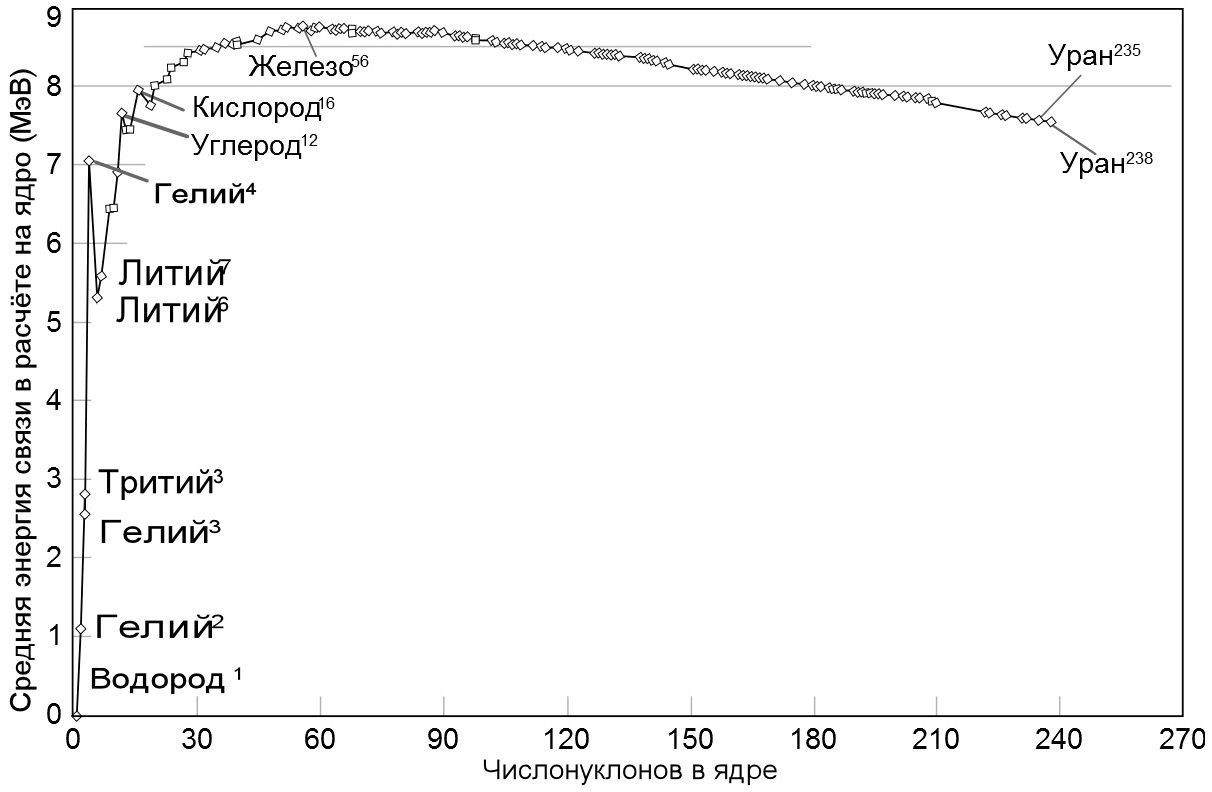
This is due to the fact that iron has a minimum binding energy (per nucleon), and further the reactions are already with absorption, not energy release. The star has spent its entire long life in equilibrium between the forces of gravity that compress it and thermonuclear reactions that radiate energy and tend to “crush” matter.
The transition from burning one substance to another occurs with an increase in temperature in the star’s core (since each subsequent reaction requires an ever-increasing temperature - sometimes by orders of magnitude). But despite the increase in temperature - in general, the "balance of forces" is maintained until the very last moment ...
End of life The
processes taking place at the same time can be divided into four scenarios:
1) Not only the star's lifespan depends on the mass, but also how it will end. For the "smallest" stars - brown dwarfs (class M), it will end after the burning of hydrogen. But the fact that heat transfer in them is carried out exclusively by convection (mixing) means that the star makes the most of its entire supply. And also - it will be spent as carefully as possible for billions of years. But after spending all the hydrogen, the star slowly cools down and becomes in a state of a solid ball (similar to Pluto) consisting almost entirely of helium.
2) Next are the heavier stars (to which our Sun belongs) - the mass of this possible future star is limited from above to 1.39 solar masses for the remainder formed after the stage of the red giant (Chandrasekhar limit). The star has enough weight to ignite the reaction of carbon formation from helium (naturally, the most common nuclides are helium-4 and carbon-12). But the hydrogen-helium reactions do not cease to go - just the region of their course passes into the outer layers of the star, still saturated with hydrogen. The presence of two layers in which thermonuclear reactions take place leads to a significant increase in luminosity, which causes the star to “inflate” in size.
Many people mistakenly believe that until the time of the red giant, the luminosity of the Sun (and other similar stars) gradually decreases, and then begins to grow sharply, in fact, the growth of luminosity goes throughout the main part of the star’s life:
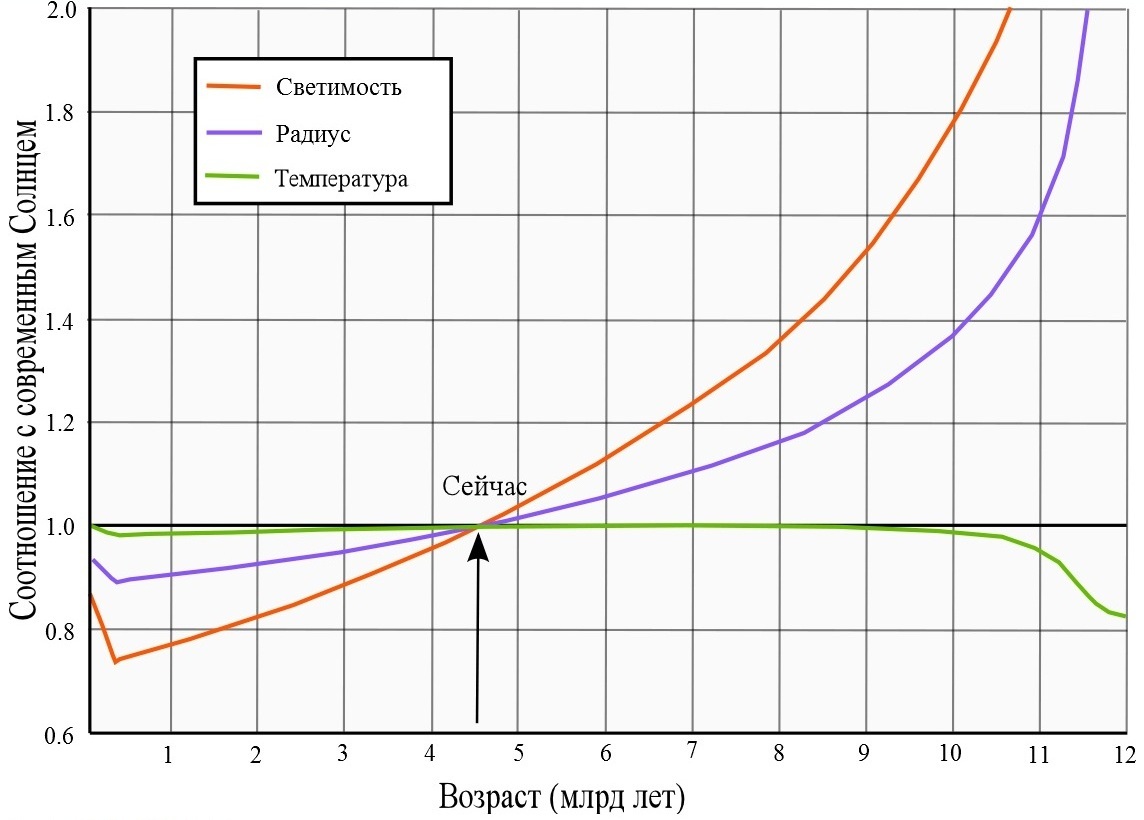
And based on this, incorrect theories that perspective - Venus is the best option for human settlement - in fact, by the time we have the technology for terraforming modern Venus, they may be hopelessly outdated, and simply useless. Moreover, according to modern data, the Earth has high chances to survive the state of the “red giant” of the Sun, on its border, but Venus has no chances, and “everything that has been gained through overwork” will become part of the “replenished” Sun.

At the stage of the red giant, the star not only significantly increases the luminosity, but also begins to quickly lose mass, due to these processes, fuel reserves quickly end (this stage is at least 10 times smaller than the hydrogen burning stage). After which the star decreases in size, turns into a white dwarf and gradually cools.
3) When the mass is above the first limit, the mass of such stars is enough to ignite subsequent reactions, up to the formation of iron, these processes ultimately lead to a supernova explosion.
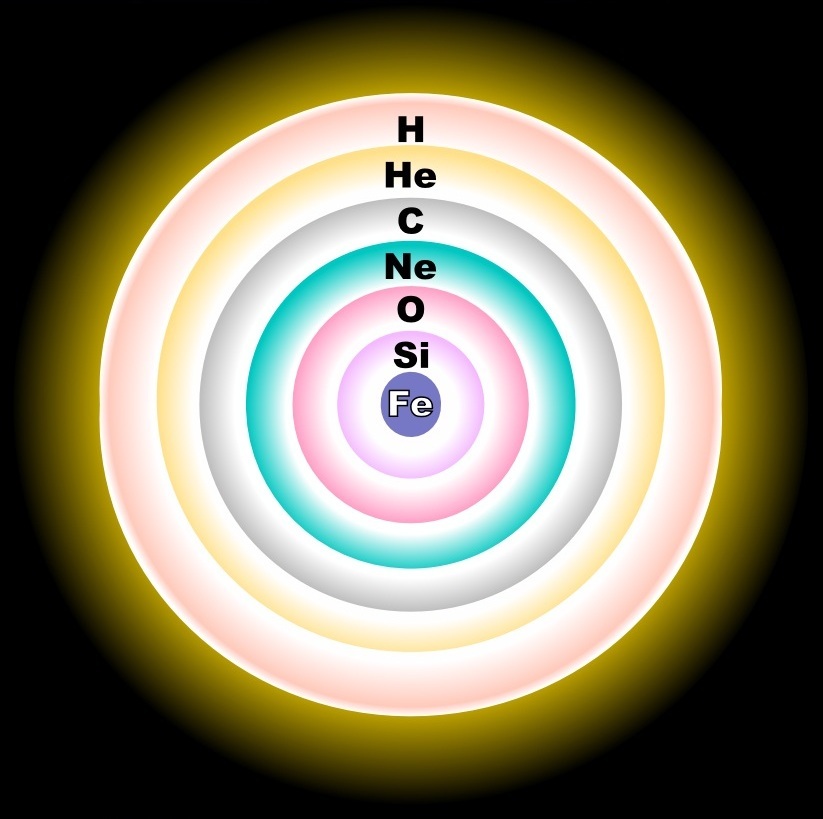
Iron almost does not participate in thermonuclear reactions (and certainly does not release energy), and simply gathers in the center of the nucleus until the pressure exerted on it from the outside (and the action of the gravitational force of the nucleus from the inside) reaches a critical point. At this moment, the force compressing the star’s core becomes so strong that the pressure of electromagnetic radiation is no longer able to keep matter from compression. Electrons are “pressed” into the atomic nucleus, and are neutralized with protons, so that practically only neutrons remain inside the nucleus.
This moment has a quantum basis, and has a very clear boundary, and the composition of the nucleus consists of fairly pure iron, so the process is catastrophically fast. It is assumed that this process takes place in seconds, and the core volume drops 100,000 times (and its density increases accordingly):
The surface layers of the star, finding themselves without support from below, rush inward, falling onto the formed "ball" of neutrons, the substance bounces back, and an explosion occurs. The blast waves rolling through the stratum of the star create such a compaction and increase in the temperature of the substance that reactions begin to form with the formation of heavy elements (up to uranium).
These processes are based on neutron capture (r-process and s-process) or proton capture (p-process and rp-process), with each such reaction a chemical element increases its atomic number. But in a normal situation, such particles do not have time to "catch" another neutron / proton, and decays. In the processes occurring inside the supernova, the reactions proceed so fast that the atoms manage to “slip through” most of the periodic table without breaking up.
Thus, the formation of a neutron star:
4) When the mass of the star exceeds the second one, the Oppenheimer-Volkov limit (1.5 - 3 solar masses for the remnant or 25-30 masses for the original star), too much mass of matter remains during the supernova explosion, and the pressure is not able to restrain even quantum forces.
In this case, the limit is due to the Pauli principle that two particles (in this case, neutrons) cannot be in the same quantum state (this is the basis for the structure of an atom consisting of electron shells, the number of which gradually increases with the atomic number).
Pressure squeezes the neutrons, and the further process becomes irreversible - all the matter is pulled together to one point, and a black hole is formed. It itself does not affect the environment in any way (with the exception of gravity, of course), and can only glow due to the accretion (simply falling) of matter onto it: As you can see from the sum of all these processes, stars are a real storehouse of physical laws. And in some areas (neutron stars and black holes), these are real physical laboratories with extreme energies and states of matter. Links: A review article on galspace Post-Science - Neutron Stars and Black Holes (video series):
